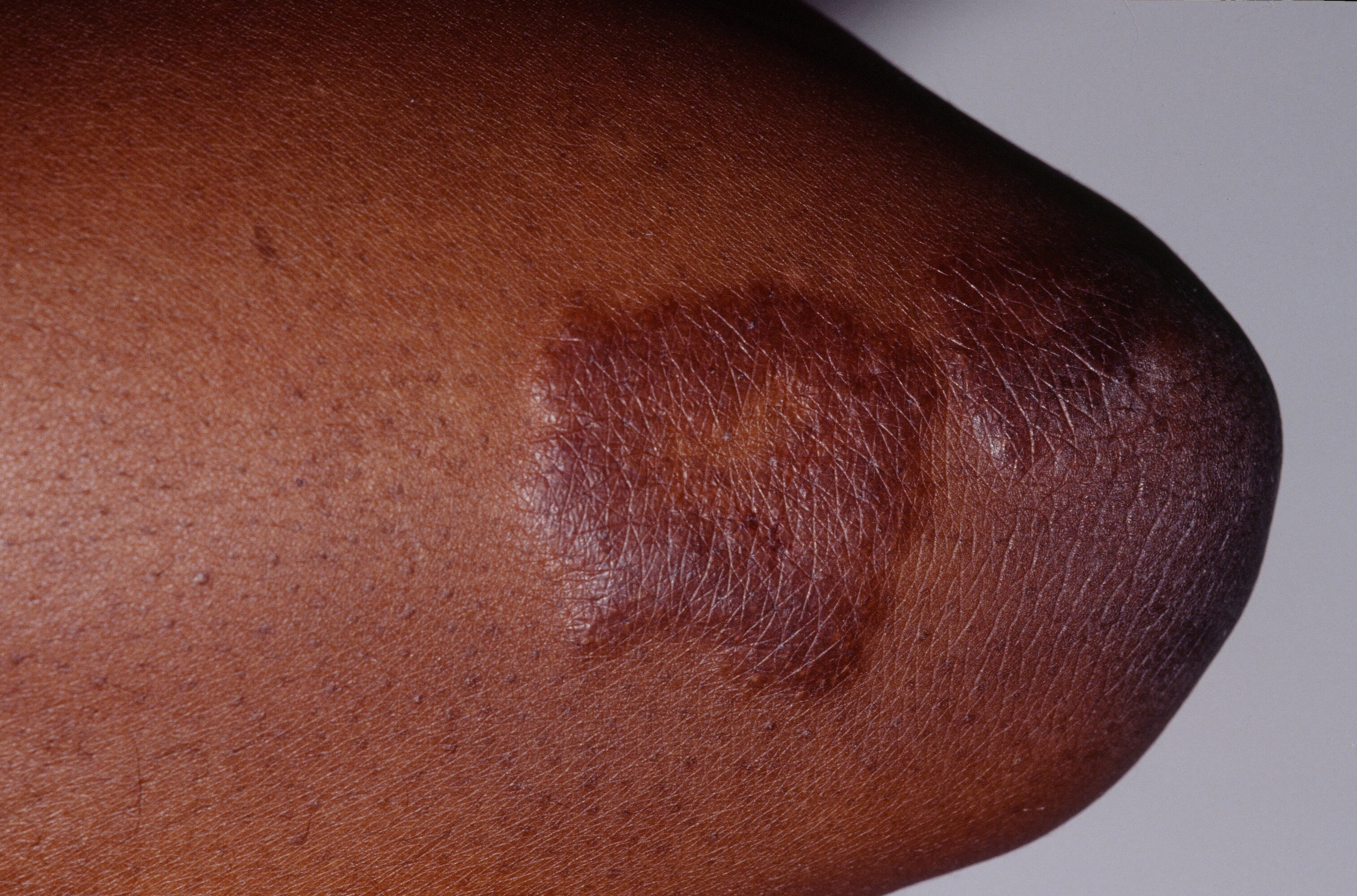 Dermal papules and plaques in a darker-skinned patient is typical.
Dermal papules and plaques in a darker-skinned patient is typical.
 Dermal papules and plaques in a darker-skinned patient is typical.
Dermal papules and plaques in a darker-skinned patient is typical.
Sarcoidosis is a multisystem disease of exclusion characterized by noncaseating granulomas. An infection or presence of foreign body must be excluded. It can affect many organ systems including the skin, lungs, eye and bone.
Sarcoidosis is a systemic disease and virtually any organ of the body may be affected. Cutaneous sarcoidosis may manifest itself in the skin in many ways including papules, plaques, nodules, annular lesions, ulcers, ichthyosis, scar infiltration, erythroderma, ungual lesions, and erythema nodosum. Panniculitis as presenting feature in sarcoidosis is rarely reported. Ocular (uveitis, iris nodules, conjunctivitis), pulmonary, musculoskelatal (polyarthritis, bone cysts) and lymph node involvement are common. Granulomas may be found in the kidneys, heart and elsewhere. Patients with sarcoidosis are at increased risk for malignancy, e.g. lymphoma.
Different skin lesions can have different implications. Lupus pernio and plaques are associated with more severe disease, whereas erythema nodusum is classically associated with acute and often self-limited disease. Maculopapular lesions often confer a more benign course. Subcutaneous nodular lesions are often reported with more systemic forms.
Scarring alopecia from infiltration of the scalp may occur. It is most common in African-American females in the forth to fifth decades.
Ulcerative sarcoidosis occurs rarely It is most common in black women. Ulcers may develop de novo or in preexisting sarcoidal plaques. The legs are most commonly involved.
Darier-Roussy sarcoidosis, or subcutaneous sarcoidosis, presents with multiple, mobile, non-tender subcutaneous nodules with no epidermal change. They usually are found on the arms. The most common systemic association is pulmonary sarcoidosis.
Sarcoidosis may present as nodular skin lesions localized to either single or multiple colors within a tattoo. The tattoo may be affected soon after placement or up to 45 years later. Patients may have a negative workup only to later develop sarcoidosis or sarcoidal granulomas in a tattoo may reveal asymptomatic lung and nodal involvement. Treatment for these is similar to non-tattoo related sarcoidosis.
Workup up by a non-dermatologist is usually done. There is a high rate of systemic involvement in patients presenting with cutaneous sarcoidosis.
Homepage | Who is Dr. White? | Privacy Policy | FAQs | Use of Images | Contact Dr. White